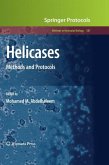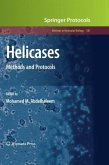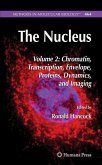Immunoelectron microscopy is a key technique that bridges the information gap between biochemistry, molecular biology, and ultrastructural studies placing macromolecular functions within a cellular context. In Immunoelectron Microscopy: Methods and Protocols, expert researchers combine the tools of the molecular biologist with those of the microscopist. From the molecular biology toolbox, this volume presents methods for antigen production by protein expression in bacterial cells, methods for epitope tagged protein expression in plant and animal cells allowing protein localization in the absence of protein specific antibodies as well as methods for the production of anti-peptide, monoclonal, and polyclonal antibodies. From the microscopy toolbox, sample preparation methods for cells, plant, and animal tissue are presented. Both cryo-methods, which have the advantage of retaining protein antigenicity at the expense of ultrastructural integrity, as well as chemical fixation methods that maintain structural integrity while sacrificing protein antigenicity have been included, with chapters examining various aspects of immunogold labeling. Written in the highly successful Methods in Molecular Biology(TM) series format, chapters include introductions to their respective topics, lists of the necessary materials and reagents, step-by-step, readily reproducible laboratory protocols, and notes on troubleshooting and avoiding known pitfalls.Authoritative and essential, Immunoelectron Microscopy: Methods and Protocols seeks to facilitate an increased understanding of structure function relationships.
From the reviews:
"The editors tell us that Immunoelectron microscopy is the technique that bridges the information gap between biochemistry, molecular biology, and ultrastructural studies placing macromolecular functions within a cellular context. Immunoelectron microscopy can be used on virtually every unicellular and multicellular organism. ... An excellent source of information about the minutiae of preparation techniques if this is your area." (P. W. Hawles, Ultramicroscopy, Vol. 111 (7), June, 2011)
"The editors tell us that Immunoelectron microscopy is the technique that bridges the information gap between biochemistry, molecular biology, and ultrastructural studies placing macromolecular functions within a cellular context. Immunoelectron microscopy can be used on virtually every unicellular and multicellular organism. ... An excellent source of information about the minutiae of preparation techniques if this is your area." (P. W. Hawles, Ultramicroscopy, Vol. 111 (7), June, 2011)








